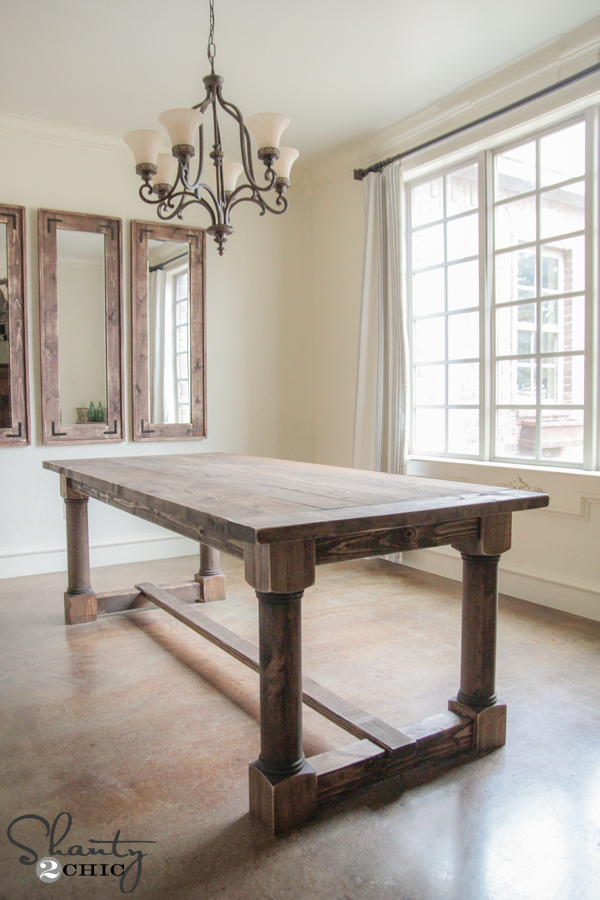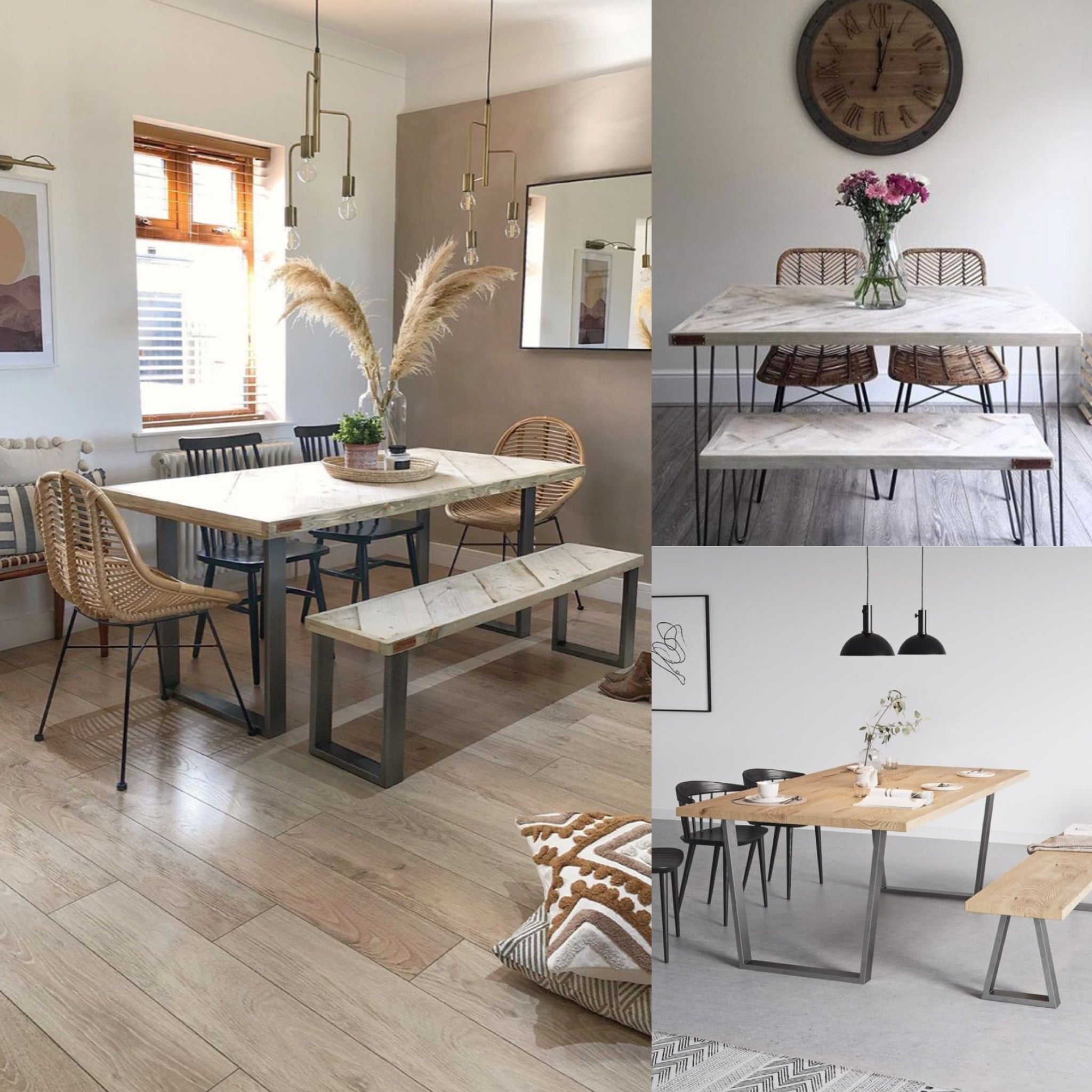The Top Trends in Dining Room Table Legs You Need to Know
The Top Trends in Dining Room Table Legs You Need to Know
Blog Article
From Traditional to Modern: Discover the Perfect Dining Room Table Legs for Your Design
While classic styles such as cabriole and turned legs stimulate a feeling of classic class, modern designs like hairpin and geometric options offer an opportunity for striking visual interest. As you think about these aspects, the question stays: how can you seamlessly incorporate these diverse leg designs to produce an unified dining experience?
Recognizing Table Leg Styles
The selection of dining-room table leg designs can considerably influence both the visual appeals and performance of the space. Each leg style contributes one-of-a-kind visual aspects and practical features, accommodating diverse style preferences and usage requirements. Understanding these styles is essential for choosing the ideal dining table that aligns with your general interior style vision.
For example, tapered legs provide a tidy, classic look that can enhance a space's sophistication, while stand bases supply security and optimize legroom, making them optimal for smaller sized rooms. Hairpin legs, a trademark of mid-century modern design, introduce a commercial panache, permitting an airy, open feeling. Similarly, trestle legs evoke rustic beauty, supplying robust assistance and a feeling of timelessness.
In addition, the choice of materials plays a substantial duty. Wood legs can bring heat and appearance, whereas metal choices frequently communicate a sleek, contemporary ambiance. Inevitably, comprehending table leg designs is essential for producing a cohesive dining location that reflects individual style while making certain practicality and convenience. By thoughtfully considering these elements, you can boost both the aesthetic and practical allure of your dining area.
Traditional Table Leg Options
When choosing dining space table legs, typical choices typically symbolize classic beauty and craftsmanship. These designs show an abundant heritage and a commitment to high quality, making them perfect for those that appreciate traditional looks.
One of one of the most renowned conventional leg designs is the cabriole leg, identified by its elegant curved shape. This design commonly features attractive makings and is most commonly found in Queen Anne and Chippendale furniture. One more popular alternative is the turned leg, which boasts a series of smooth, rounded shapes that provide a traditional appearance while keeping stability.
Additionally, the straight leg, while straightforward, uses a tough and unadorned framework that can blend flawlessly with a selection of tabletop designs. For those attracted to ornate outlining, claw-and-ball feet legs evoke a sense of majesty and can work as a spectacular centerpiece in any type of dining room.
Finally, pedestal bases, although not purely legs, give an alternative conventional choice that permits ample legroom and can be perfectly carved. Each of these conventional leg styles adds to the overall setting of a dining-room, marrying feature with aesthetic appeal.

Modern Table Leg Styles
Modern table leg layouts provide a diverse range of designs that emphasize innovative materials and clean lines. These designs commonly prioritize performance while acting as striking focal points within a dining room. Minimal looks are common, with legs crafted from materials such as steel, glass, and crafted timber, which contribute to a contemporary and airy feel.
One popular layout is the barrette leg, characterized by its slender, tapered framework that offers stability without overwhelming the table top (dining room table legs). This design is typically found in mid-century contemporary furniture and can effortlessly complement various eating table forms. more info here An additional fad is the use of geometric shapes, where legs might handle angular or unbalanced kinds, adding visual rate of interest and a touch of artistry

Mixing Designs for Distinct Areas
Often, property owners look for to linked here create distinct dining spaces that show their individual design by blending various style components. This method permits for the incorporation of varied visual appeals, leading to a harmonious yet distinct atmosphere. Matching a rustic wood table with streamlined, modern metal legs can develop a captivating contrast that elevates the space's total allure.
In addition, integrating vintage table legs with modern table tops can stimulate a feeling of background while keeping a modern-day perceptiveness. Such combinations not just display individual preference but additionally motivate imagination, allowing house owners to curate an area that really feels both personal and welcoming.
Shade plays a critical role in this mixing procedure; selecting table legs that enhance or comparison with the existing color pattern can boost visual rate of interest. For instance, whitewashed legs can soften the boldness of a dark table surface area, developing a balanced aesthetic.
Tips for Picking the Right Legs
Picking the right table legs is important for achieving both performance and visual charm have a peek at these guys in your eating room. Begin by taking into consideration the total style of your area. Conventional setups take advantage of legs that feature intricate carvings or transformed designs, while modern rooms might require sleek, minimalist designs.
Next, analyze the height and stability of the legs. dining room table legs. Common table range in between 28 to 30 inches in height, so make certain the legs complement this measurement for comfort. In addition, robust materials, such as wood or steel, can enhance stability and longevity
Review the leg shape also-- choices consist of straight, tapered, or pedestal designs. Straight legs offer a classic appearance, while conical legs can include a touch of beauty. Pedestal bases offer adequate legroom and are excellent for smaller sized spaces.
Final Thought
In summary, picking the perfect eating area table legs calls for careful factor to consider of both contemporary and traditional styles. By balancing leg style, height, and product with the general decor, a cohesive and inviting environment can be attained.
The range of dining area table leg designs can dramatically affect both the looks and capability of the space. Ultimately, comprehending table leg styles is vital for creating a cohesive dining location that shows personal design while making sure usefulness and convenience.One of the most iconic conventional leg designs is the cabriole leg, defined by its elegant rounded shape. Straight legs use a classic look, while conical legs can include a touch of elegance.In recap, choosing the excellent dining room table legs requires cautious factor to consider of both typical and modern-day designs.
Report this page